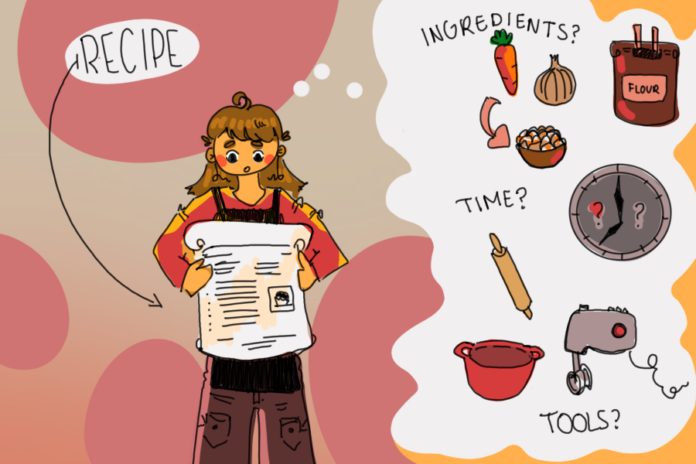Even the tiniest details matter
By MAYA KORNYEYEVA — mkornyeyeva@ucdavis.edu
It’s the start of another fall quarter — a time filled with optimism, a little bit of nerves and a palpable sense of excitement. A new school year also means a new you; it’s a chance to make friends, go to some school-wide events, tweak your style and start your classes strong. It’s your moment to get back into the academic groove and get a feel for everything UC Davis has to offer.
If you’re an off-campus apartment dweller like me, it also means a fresh start to plan out your schedule for the next three months, especially when it comes to food. When I moved out of the dorms last year, it was quite a daunting prospect to be at my own discretion to purchase ingredients and scavenge for good college meal recommendations. It proved challenging to find recipes that didn’t require a lot of expensive ingredients, and even harder to make sure I did every step of the recipe right.
Over the last year, I’ve learned a tremendous amount about how to properly read a recipe and what the best recipe formats look like. Here are some of my tips to help you along as you start cheffing-it-up this quarter.
How to properly read a recipe:
- Read the entire recipe from start to finish, taking note of the ingredients and any prep work that needs to be done. Plenty of recipes will be marketed as “15 to 30-minute quick meals” when, in fact, they assume that you’ve already done a good amount of prep work. Look for anything that is already “pre-made” like crust, puff pastry, chopped veggies or marinated meat and prepare it in advance.
- Mentally gauge the time the recipe will take you. Not everyone is a speedy cook (I am definitely not), so remember to keep your own skill level in mind when approaching a recipe. Make sure to account for “waiting time,” which includes the time that it takes to preheat the oven, refrigerate your dish or bring ingredients to room temperature (such as butter or eggs). I’ve found that it takes me roughly 20 minutes longer than the estimated time shown on the recipe: give yourself space to problem-solve any issues without feeling pressured for time.
- Ensure you have the tools and ingredients necessary. Cooking is very precise, so recipes are often based on the assumption that you have all the measuring equipment, pots, pans and culinary tools at your disposal. While reading the recipe through for the first time, make sure to think about what items you will need to help you cook — whether it’s a spatula, sieve, zester, mixer or rolling pin.
- Don’t panic if you’re an ingredient short — there are often plenty of options for substitute ingredients to use instead. A few common ones include lemon juice or vinegar instead of buttermilk and margarine or oil instead of butter. Spice mixes don’t have to be precise either; I’ve found that it’s rather fun to blend my own concoction of spices for a meal and try out some new flavors, especially if I’m only missing a few from the original recipe.
The best recipes have…
- A list of tools alongside a list of ingredients. These are always the clearest and simplest recipes to follow.
- Batched proportions. Let’s say you are looking at a cookie recipe to satisfy your post-exam cravings. The most straightforward recipes have tabs with ingredient proportions for half batches (12 cookies), regular batches (24 cookies), double batches (48 cookies) and so on. This allows you to skip a whole bunch of complicated math when it comes to doubling or halving the amounts of ingredients you need.
- An estimated “end amount,” i.e. how many people the recipe is good for. As an example, if you’re planning to bring a pan of mac and cheese over for a friend’s potluck, you may want to look for a recipe that “feeds 8-10 people” rather than a recipe that includes no indication of how much mac and cheese you’ll actually end up with. That way, you can search and plan your dish accordingly.
- Step-by-step photos or videos. The most beginner-friendly recipes walk you through each step of the process, teaching you what order to mix ingredients and showing you what each phase of the recipe should look like. This is extremely helpful when you are new to cooking and need a little extra guidance, allowing you to match the written description in the recipe to a visual image.
So, there you have it. These are some of my biggest takeaways from cooking for myself last school year, and I hope they prove useful to anyone out there that is new to cooking. Here’s to always finding practical and delicious recipes that make living and cooking by yourself a bit less overwhelming.
Written by: Maya Kornyeyeva — mkornyeyeva@ucdavis.edu
Disclaimer: The views and opinions expressed by individual columnists belong to the columnists alone and do not necessarily indicate the views and opinions held by The California Aggie.





